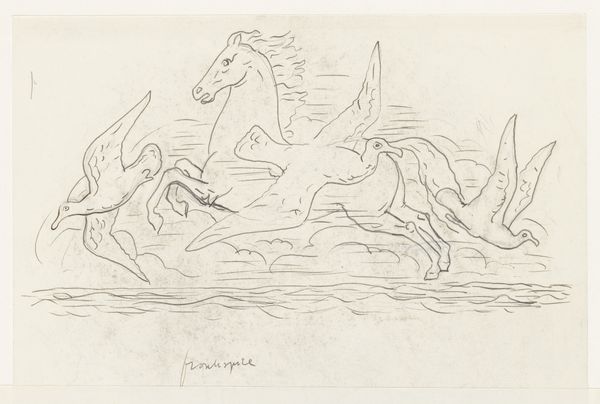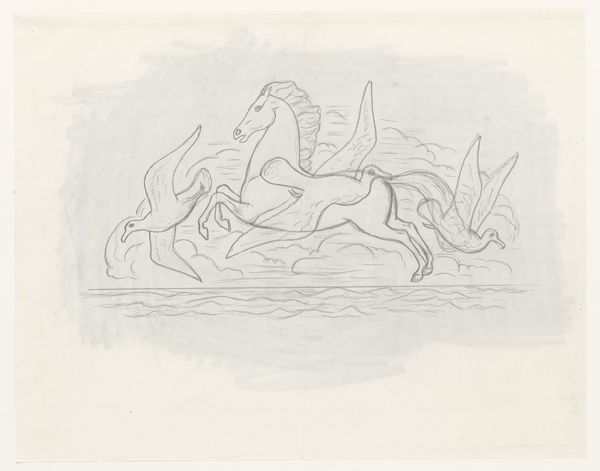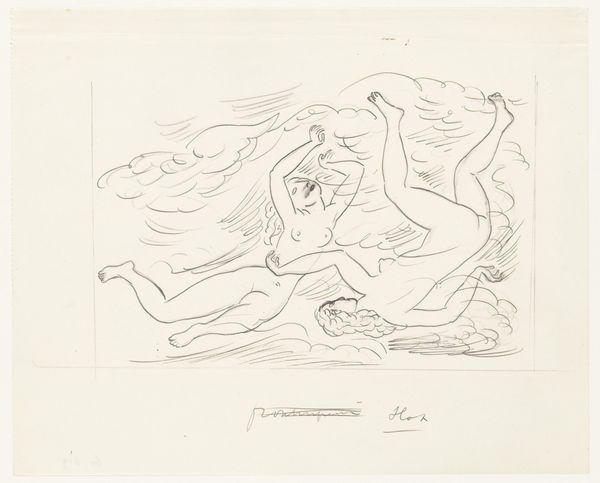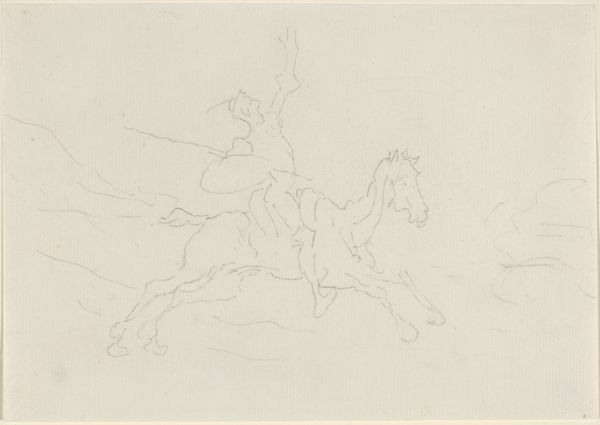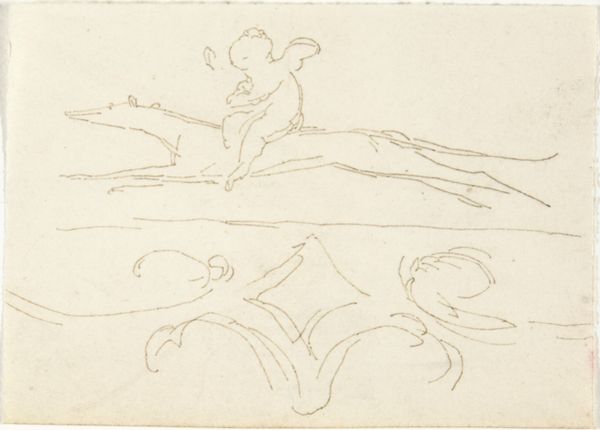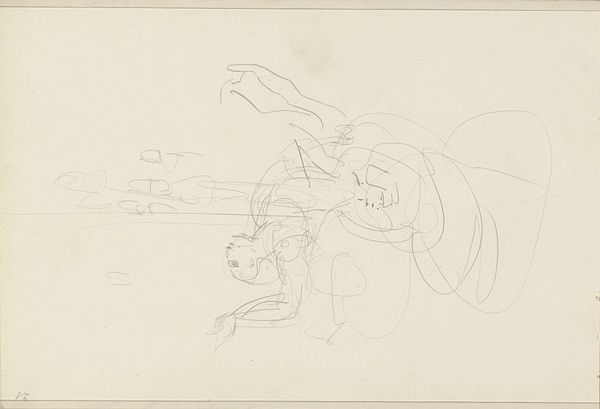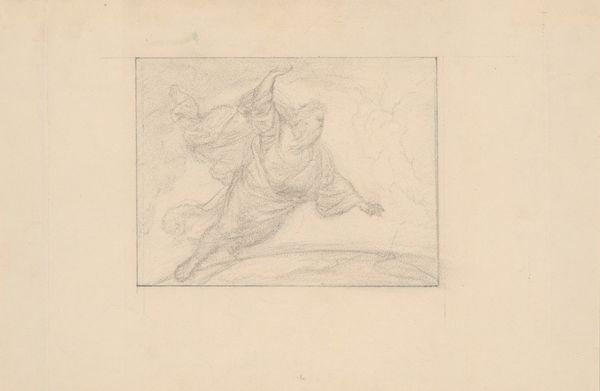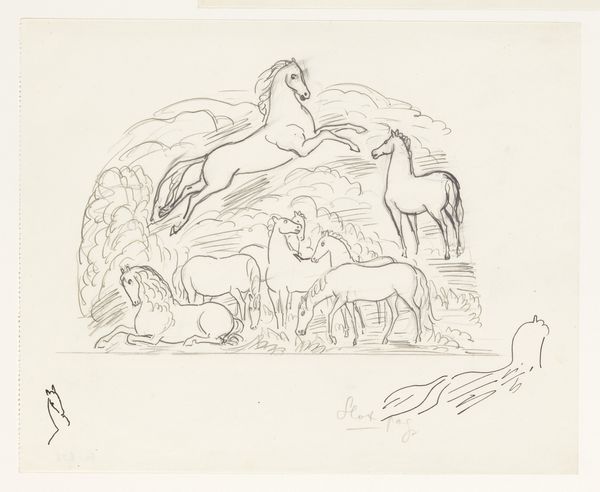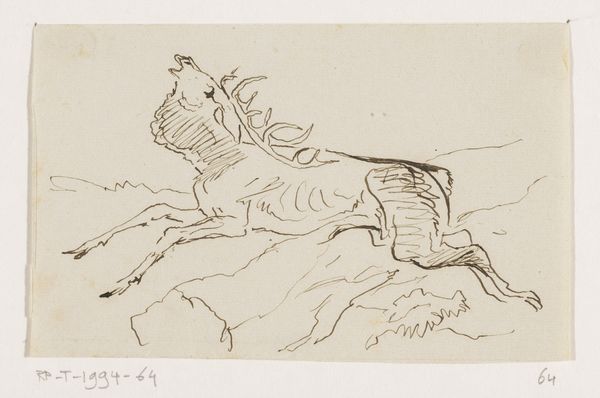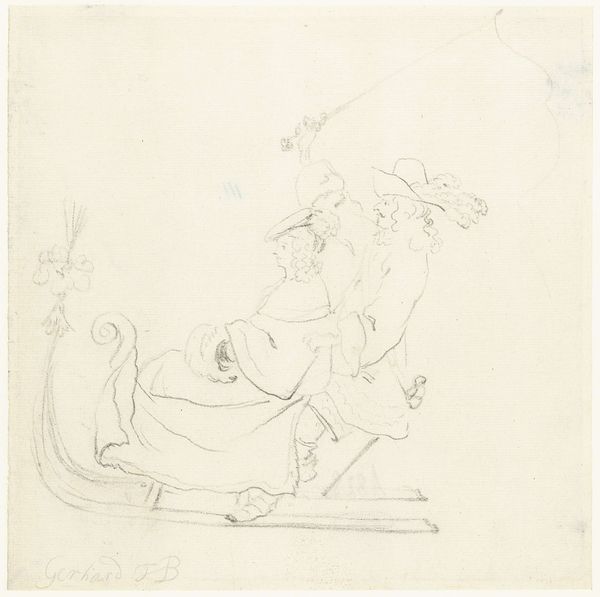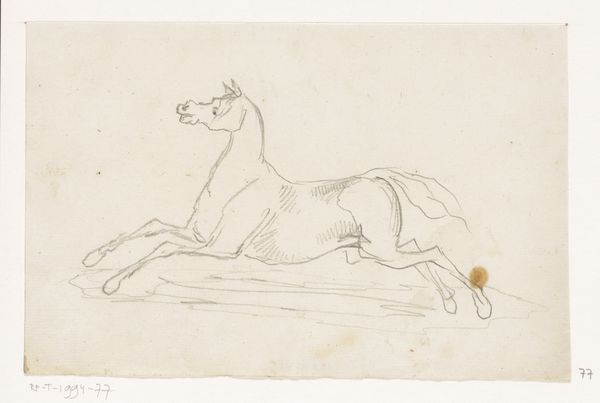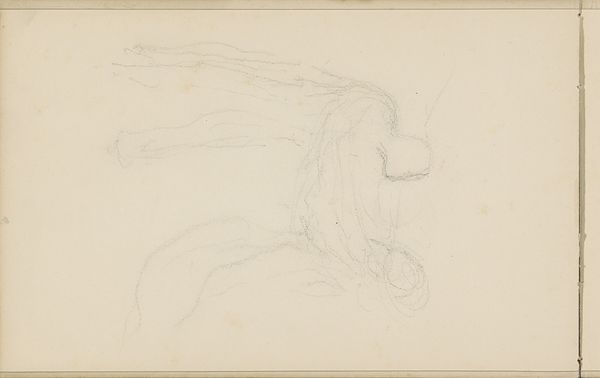
drawing, paper, pencil
#
drawing
#
comic strip sketch
#
light pencil work
#
landscape
#
figuration
#
paper
#
personal sketchbook
#
idea generation sketch
#
sketchwork
#
ink drawing experimentation
#
pencil
#
horse
#
sketchbook drawing
#
pencil work
#
sketchbook art
#
modernism
#
initial sketch
Dimensions: height 210 mm, width 260 mm
Copyright: Rijks Museum: Open Domain
Editor: We’re looking at "Studieblad met paard en drie zeemeeuwen," or "Study Sheet with Horse and Three Seagulls," a pencil drawing by Leo Gestel, made sometime between 1891 and 1941. It feels very… fleeting, like a quickly captured idea. What do you make of this seemingly simple sketch? Curator: It’s interesting to consider this work through the lens of its materiality. Pencil on paper - such common materials, readily available and inexpensive. What does the choice of such accessible materials tell us about the artist's intention, or perhaps the social context in which this was created? Was Gestel experimenting, using readily available materials due to economic constraints, or intentionally democratizing the art-making process? Editor: That’s a great point; I hadn't considered the economics of it. Perhaps pencil sketches were more accessible, allowing for greater artistic exploration without the pressure or expense of larger-scale works. But is this "lesser" medium considered less "important?" Curator: Exactly! We are conditioned to assign value based on permanence and rarity, typically found in painting or sculpture. But doesn’t this humble sketch challenge those traditional boundaries? Consider the labor involved: the artist’s hand, the repetitive act of sketching, refining… How does that compare to, say, the labor involved in producing a bronze sculpture, both materially and socially? The rapidness of it makes it appealing. Is there an element of labour absent from this? Editor: I see what you mean. Thinking about the process and the materials really changes my perception of its value and significance. So it's not *just* a preliminary sketch, it is also representative of its time. Curator: Precisely! And considering the date, straddling the turn of the century and extending into the mid-20th, how might industrialization, the rise of mass production, and changing social structures influenced Gestel's artistic practice and material choices? Editor: This has shifted how I see sketches now! It prompts a reevaluation of value and the story behind the artwork's materials and production. Thanks! Curator: My pleasure! Thinking about the ‘how’ and ‘why’ of making reveals often-overlooked narratives.
Comments
No comments
Be the first to comment and join the conversation on the ultimate creative platform.
